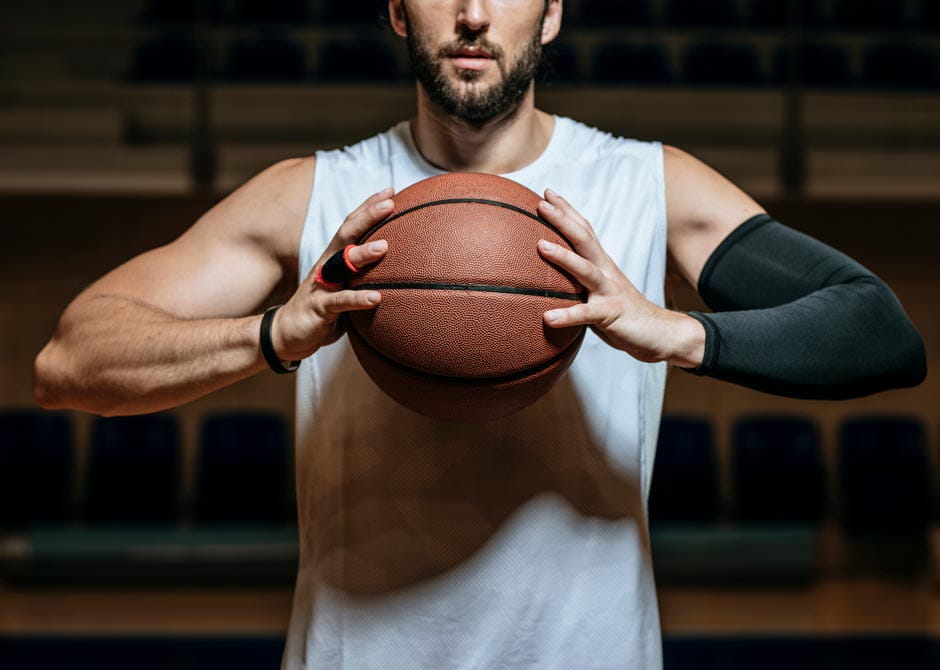 What is a dislocated finger?
What is a dislocated finger?
A dislocated finger happens when the bones in your finger are forced out of their normal position. This can happen when a finger jams or bends backward. This injury commonly occurs during sports. A dislocated finger will look crooked or bent and can be extremely painful.
Don’t try and fix it yourself. Seek immediate medical attention to have a doctor put the finger back in place.
The orthopedic hand specialists at The Ohio State University Wexner Medical Center in Columbus, Ohio, are available to see you and help fix the dislocation, evaluate you for more serious damage and provide further hand treatments and hand therapy, if needed, to get you back to normal activity. Ohio State Orthopedic Urgent Care at the Jameson Crane Sports Medicine Institute is just one of the various convenient locations around central Ohio where our orthopedic experts can serve you in an urgent situation, like a dislocation.
What causes a dislocated finger?
Dislocated fingers are most often the result of sports injuries, especially sports played with a ball. When you’re trying to catch or block a ball (such as in basketball or football), a finger can easily get jammed – causing the dislocation. Finger dislocations can also be the result of a fall or accident.
The joints in your fingers are more prone to dislocation injuries because they are designed to provide a wide range of motion while being delicate enough for precise movements. Your joints are stabilized by ligaments, or strong bands of tissue that connect bones. When a joint absorbs a sudden force, like the impact of a ball, these ligaments can be stretched or torn, causing bones to be forced out of their normal position – or dislocated.
How can you tell if your finger is dislocated?
Some signs of a dislocated finger include:
- Your finger looks crooked or bent out of shape
- Your finger appears dislodged, such as sticking out to one side
- Swelling and bruising around the joint
- You feel intense pain in your finger
- You can’t move your finger
If you believe you have a dislocated finger, you should seek medical help as soon as possible.
Do you need to see a doctor?
Yes, you should seek medical help right away. Do not attempt to force the finger back into place on your own, as you could cause further damage to the joint, muscles and surrounding tissues. Our team of orthopedic experts and other health care professionals are trained to evaluate and properly treat these injuries. Delaying care runs the risk of long-term complications such as chronic pain, stiffness or joint instability.
Your doctor will likely diagnose the dislocated finger during a simple physical exam, but may order X-rays to assess the extent of the dislocation and rule out any fractures.
Treatment
If you believe you have a dislocated finger, you should seek immediate medical help. Until you get to the doctor, you should:
- Remove any jewelry or rings due to swelling
- Don’t move the joint, or use a splint to keep it from moving
- Ice the injured joint to reduce swelling
Once you see your doctor, they will gently move the bones back into the correct position. This can be painful, so a local anesthetic may be used.
After the bones are back in place, your doctor may use a splint to keep your finger immobilized and give it time to heal. It may take a few weeks for your finger to heal properly. Your doctor may recommend exercises or rehabilitation to help restore movement and strength.
How long does it take a dislocated finger to heal?
In most cases, you can return to your normal activities, including sports, within a few weeks. It may take up to six months for your finger to heal completely.
Why should you choose Ohio State for finger injuries?
At Ohio State, our orthopedic specialists are trained to deal with bone and joint problems. Our Hand and Upper Extremity Care Team provides expert care to ensure your finger is properly realigned and heals correctly. In rare instances, a dislocated finger may require surgery to repair torn ligaments or broken bones. In those cases, you can trust the orthopedic experts at Ohio State to provide you with the best care available.
